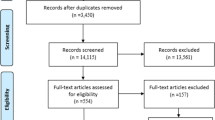Abstract
Objective: To determine the factors that are related to short-term survival and to develop a model that can be used to estimate prognosis in terminal lung cancer patients.
Design: Longitudinal cohort study of hospice lung cancer patients followed from date of admission to hospice until death.
Setting: Community-based nonprofit home hospice service.
Patients: Three hundred ten consecutive lung cancer patients admitted to hospice, with a separate validation sample of 78 consecutive hospice lung cancer patients.
Measurements: The relationships between survival and admission demographic characteristics, information from the history and physical examination, assessments of performance and nutrition, particular symptoms, and the presence of a living will were evaluated.
Results: Mean survival was 51 days, with a median survival of 27 days. Shorter survival was independently associated with those who had no living will on admission to hospice (p=0.008), those who had tissue types other than squamous cell or adenocarcinoma (p=0.008), those who had liver metastases (p=0.04), those who were tachycardic (p<0.001), those who required assistance or were dependent in their toileting (p<0.001) and feeding (p=0.001), those who had dry mouths (p=0.01), and those who had severe or incapacitating pain (p<0.05). A model estimating survival time based on the number of these significant variables present is reported (r=0.53 in the original sample; r=0.38 in the validation sample).
Conclusions: Multiple factors, including tissue type, the presence of metastases, assessments of functional status, specific symptoms, and the presence of a living will, were related to short-term survival in terminal lung cancer patients admitted to hospice. A model utilizing these specific factors allows useful estimates of short-term survival for these patients.
Similar content being viewed by others
References
Feinstein AR, Wells CK. A clinical-severity staging system for patients with lung cancer. Medicine. 1990;69:1–33.
Hyde I, Wolf J, McCracken S, Yesner R. Natural course of inoperable lung cancer. Chest. 1973;64:309–12.
Lanzotti VJ, Thomas DR, Boyle LE, Smith TL, Gehan EA, Samuels ML. Survival with inoperable lung cancer. Cancer. 1977;39:303–13.
Stanley KE. Prognostic factors for survival in patients with inoperable lung cancer. J Natl Cancer Inst. 1980;65:25–32.
Thorogood J, Bulman AS, Collins T, Ash D. The use of discriminant analysis to guide palliative treatment for lung cancer patients. Clin Oncol. 1992;4:22–6.
Karnofsky DA, Burchenal JH. The clinical evaluation of chemotherapeutic agents in cancer. In: Macleod CM (ed). Evaluation of Chemotherapeutic Agents. New York: Columbia Press, 1949;191–205.
Crown JPA, Chahinian AP, Jaffrey IS, Glidewell OJ, Kaneko M, Holland JF. Predictors of 5 year survival and curability in small cell lung cancer. Cancer. 1990;66:382–6.
Ganz PA, Lee JJ, Siau J. Quality of life assessment: an independent prognostic variable for survival in lung cancer. Cancer. 1991;67:3131–5.
Walop W, Chretien M, Colman NC, et al. The use of biomarkers in the prediction of survival in patients with pulmonary carcinoma. Cancer. 1990;65:2033–46.
Evans C, McCarthy M. Prognostic uncertainty in terminal care: can the Karnofsky index help? Lancet. 1985;i:1204–5.
Parkes CM. Accuracy of predictions of survival in later stages of cancer. BMJ. 1972;2:29–31.
Reuben DB, Mor V, Hiris J. Clinical symptoms and length of survival in patients with terminal cancer. Arch Intern Med. 1988;148:1586–91.
Schonwetter RS, Teasdale TA, Storey P, Luchi RJ. Estimation of survival time in terminal cancer patients: an impedance to hospice admissions? Hospice J. 1990;6:65–79.
Forster LE, Lynn J. The use of physiologic measures and demographic variables to predict longevity among inpatient hospice applicants. Am J Hosp Care. 1989;Mar/Apr:31–4.
Bruera E, Miller MJ, Kuehn N, MacEachern T, Hanson J. Estimate of survival of patients admitted to a palliative care unit: a prospective study. J Pain Symptom Manage. 1992;7:82–6.
Katz S, Ford AB, Moskowitz RW, Jackson BA, Jaffe M. Studies of illness in the aged. JAMA. 1963;185:914–9.
Cummings SR, Strull W, Nevitt MC, Hulley SB. Planning measurements: questionnaires. In: Hulley SB, Cummings SR (eds). Designing Clinical Research. Baltimore: Williams & Wilkins, 1988; 47.
TheLifereg procedure. In: SAS Institute Inc. SAS/STATM User’s Guide, Release 6.03 Edition. Cary, NC: SAS Institute Inc., 1988;641–66.
Forster LE, Lynn J. Predicting life span for applicants to inpatient hospice. Arch Intern Med. 1988;148:2540–3.
Cohen HJ, Saltz CC, Samsa G, McVey L, Davis D, Feussner Jr. Predictors of two-year post-hospitalization mortality among elderly veterans in a study evaluating a geriatric consultation team. J Am Geriatr Soc. 1992;40:1231–5.
Lichtenstein MJ, Federspiel CF, Schaffner W. Factors associated with early demise in nursing home residents. J Am Geriatr Soc. 1985;33:315–9.
Rubenstein LZ, Wieland D, English P, Josephon K, Sayre JA, Abrass IB. The Sepulveda VA geriatric evaluation unit: data on four year outcomes and predictors of improved patient outcomes. J Am Geriatr Soc. 1984;32:503–12.
Author information
Authors and Affiliations
Rights and permissions
About this article
Cite this article
Schonwetter, R.S., Robinson, B.E. & Ramirez, G. Prognostic factors for survival in terminal lung cancer patients. J Gen Intern Med 9, 366–371 (1994). https://doi.org/10.1007/BF02629515
Issue Date:
DOI: https://doi.org/10.1007/BF02629515




